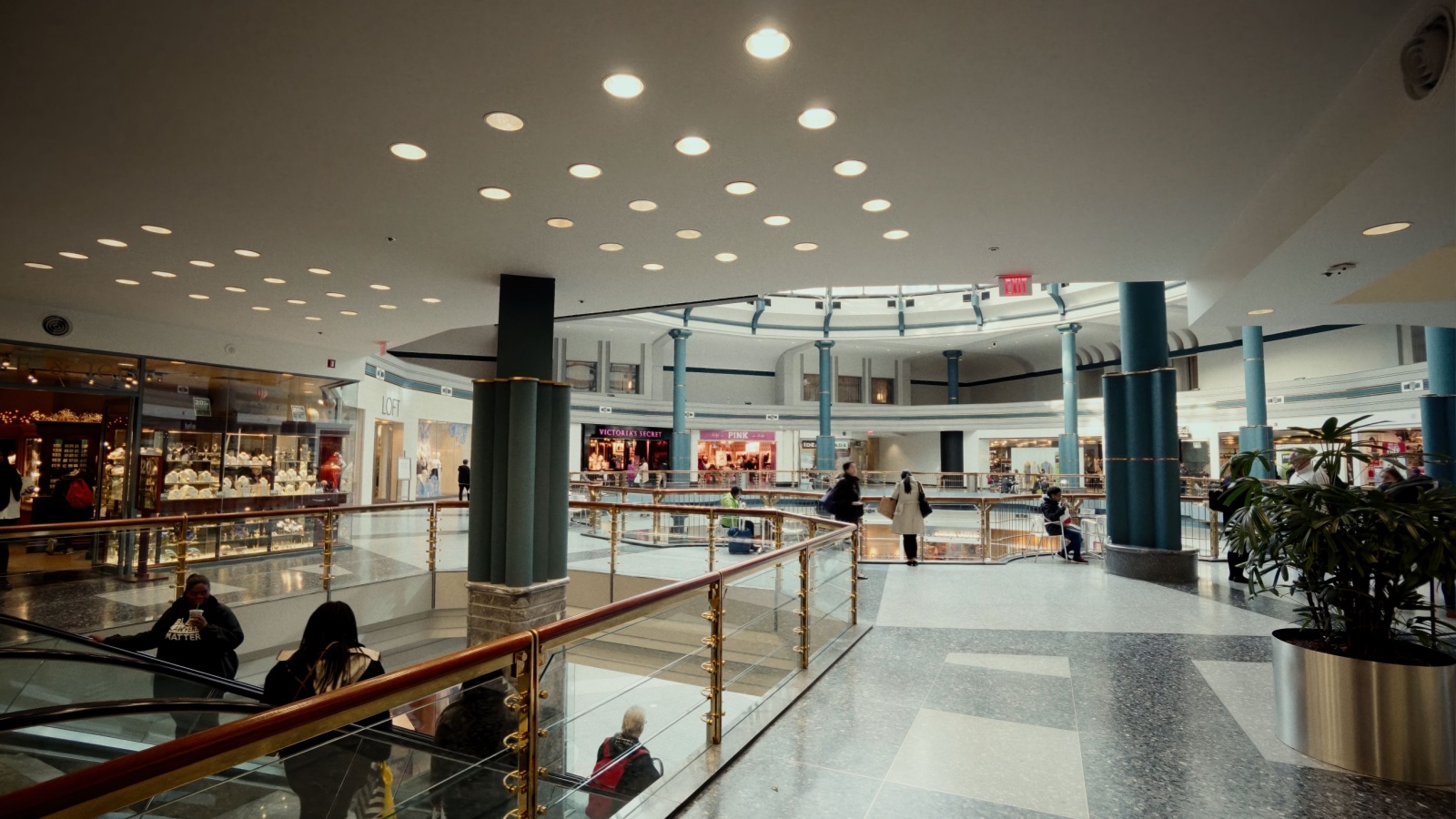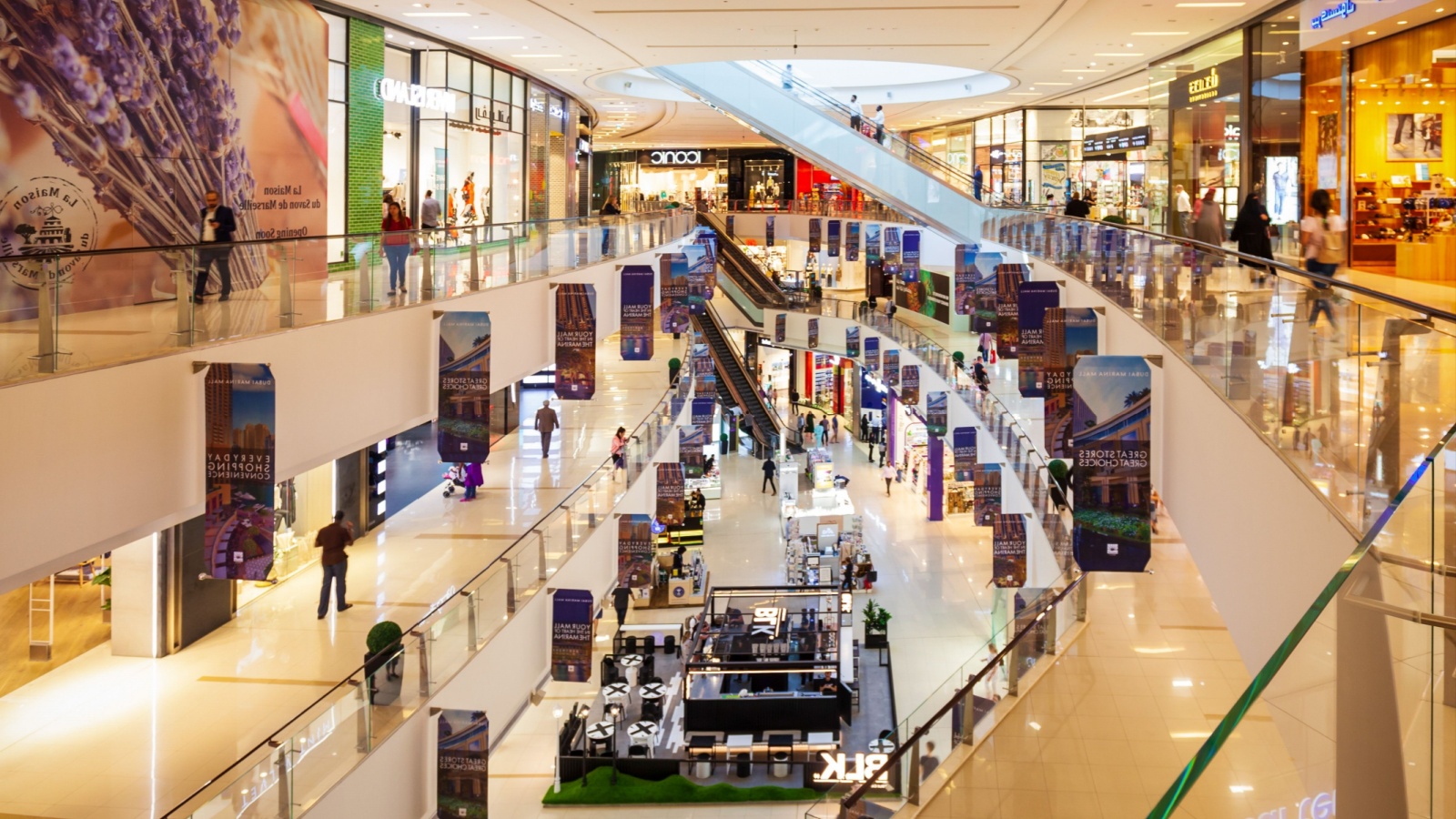Once bustling with shoppers and weekend crowds, many Canadian malls have fallen victim to changing consumer habits, online retail, and urban redevelopment. These malls were once social hubs that defined suburban life in the 1970s through the early 2000s, offering movie theatres, food courts, and anchor stores that kept local economies thriving. Over time, however, shifting demographics and declining retail traffic turned these landmarks into near-empty corridors of nostalgia. Here are 25 Canadian malls that became ghost towns.
Westmount Mall – London, Ontario

Once a thriving retail hub in London, Ontario, Westmount Mall began to decline in the late 1990s as major anchor stores like Sears and Zellers closed. Despite attempts to revitalize the property with smaller retailers and community spaces, the mall never regained its former popularity. Today, much of its space sits vacant, serving as a reminder of the city’s shifting shopping habits. Redevelopment plans have been proposed over the years, focusing on mixed-use concepts, but progress remains slow, leaving Westmount Mall as one of London’s most recognized examples of retail decline.
Southland Mall – Regina, Saskatchewan

Southland Mall was once a staple of Regina’s shopping scene, offering a range of retail stores, restaurants, and entertainment options. Over time, competition from newer shopping centres and online retail led to decreased foot traffic and tenant departures. While parts of the mall continue to operate, large vacant areas have emerged, giving it a ghost-town atmosphere. Efforts to modernize or rebrand the mall have struggled to gain momentum. Once a bustling meeting place for families, Southland now reflects the broader challenges facing mid-sized Canadian malls adapting to new retail realities.
Grant Park Shopping Centre – Winnipeg, Manitoba

Grant Park Shopping Centre in Winnipeg enjoyed decades of success as a central retail and social destination. However, like many suburban malls, it faced declining visitors and store closures as big-box retailers and e-commerce gained traction. Although management attempted to reimagine the space with updated interiors and local tenants, the foot traffic never fully returned to its former levels. The mall’s slow transformation toward community-based services and entertainment venues has kept it afloat, but much of its retail identity has faded. It remains a nostalgic landmark for long-time Winnipeg residents.
Westmount Centre – Edmonton, Alberta

Westmount Centre, one of Edmonton’s earliest enclosed malls, opened in the 1950s and became a retail landmark for decades. However, the rise of larger shopping complexes like West Edmonton Mall drew customers away. Over time, anchor tenants left, and redevelopment efforts struggled to attract new investment. While the mall remains partially occupied, much of its space has been repurposed for offices and essential services. The once-bustling corridors now echo with the quiet remnants of its retail past, making Westmount Centre a symbol of how consumer behaviour has transformed Alberta’s retail landscape.
Market Village – Markham, Ontario

Market Village in Markham was a beloved shopping and cultural destination for the Greater Toronto Area’s Chinese community. Known for its mix of traditional goods, restaurants, and specialty stores, it thrived for years before development pressures and the arrival of nearby malls led to its closure in 2018. The site was demolished to make way for the ambitious Remington Centre project, though construction has faced repeated delays. Market Village’s disappearance left a gap in the community, marking the end of an era for one of Ontario’s most distinctive multicultural shopping spaces.
Unicity Mall – Winnipeg, Manitoba

Unicity Mall opened in the 1970s and quickly became a cornerstone of Winnipeg’s retail scene. At its peak, it featured department stores, local shops, and a cinema, serving as a community hub. However, by the late 1990s, declining patronage and changing consumer trends led to its demise. The mall was demolished in 2000 and replaced by a power centre featuring big-box retailers. While the site remains commercially active, many Winnipeggers recall Unicity with nostalgia, viewing it as a symbol of the city’s transition from traditional shopping centres to modern retail complexes.
Kingsway Mall – Edmonton, Alberta

Kingsway Mall was once one of Edmonton’s most prominent shopping destinations, drawing crowds with major department stores and local boutiques. In recent years, however, it has struggled with high vacancy rates and waning relevance amid newer competitors. Despite renovations and brand additions, its retail mix has thinned, and portions of the mall feel eerily quiet compared to its vibrant past. Plans for redevelopment and potential repurposing continue to circulate. Kingsway’s decline reflects a broader trend across Canada, where once-thriving suburban malls face an uncertain future in a shifting retail economy.
Meadowlark Mall – Edmonton, Alberta

Meadowlark Mall, once a lively suburban shopping destination in Edmonton, began to decline as larger competitors like West Edmonton Mall dominated the retail landscape. Once home to popular anchors such as Zellers and Safeway, the mall gradually lost key tenants throughout the 2000s. Redevelopment turned parts of the property into office and healthcare spaces, leaving the remaining retail area sparsely populated. Although it still serves local residents with essential services, Meadowlark no longer resembles the bustling shopping hub it once was, standing instead as a modest reminder of Edmonton’s shifting commercial priorities.
Square – Toronto, Ontario

College Square in Toronto was a popular mid-sized retail plaza located near several student-heavy neighbourhoods. Initially successful due to its convenient mix of fashion, food, and entertainment outlets, it saw a gradual downturn as newer retail spaces emerged nearby. Online shopping trends also accelerated its decline. Many of its original tenants closed or relocated, leaving large sections of the mall empty. While some redevelopment plans have been proposed, progress has been slow, and the plaza now serves a smaller, more localized audience. College Square remains a shadow of its once-bustling Toronto presence.
Granville Mall – Vancouver, British Columbia

Granville Mall was a unique urban retail experiment in Vancouver, designed as a pedestrian-only shopping corridor in the downtown core. Initially envisioned as a vibrant cultural and retail hotspot, it struggled to maintain consistent foot traffic due to limited parking and competition from larger shopping centres nearby. Over time, many businesses closed, and the area shifted toward nightlife and transit use rather than traditional retail. While parts of Granville Street remain active, the mall’s original concept faded, leaving behind remnants of an ambitious but ultimately short-lived chapter in Vancouver’s commercial history.
Wellington Square Mall – London, Ontario

Wellington Square Mall once served as a cornerstone of shopping in downtown London, Ontario. Opened in the 1960s, it was a major attraction for decades before losing steam to newer suburban shopping destinations. By the early 2000s, most of its major tenants had left, prompting a large-scale redevelopment. The site was eventually transformed into Citi Plaza, a mixed-use space combining offices, retail, and education facilities. While no longer a traditional mall, Wellington Square’s legacy remains in the city’s memory as one of the first major retail landmarks to redefine its purpose through adaptation.
Scottsdale Mall – Delta, British Columbia

Scottsdale Mall in Delta was a central shopping destination for decades, attracting residents from across the Lower Mainland. As consumer habits shifted toward big-box centres and online retail, the mall’s foot traffic steadily declined. Anchor tenants such as Sears and Woolco departed, and smaller retailers followed suit. Eventually, most of the mall was demolished and replaced with the open-air Scottsdale Centre, reflecting the shift from enclosed malls to mixed-use retail plazas. Though the redevelopment revitalized the area commercially, longtime residents still recall the original Scottsdale Mall as a community landmark from another era.
Brunswick Square – Saint John, New Brunswick

Brunswick Square was once the pride of Saint John’s uptown area, serving as a regional shopping and business hub. Connected to hotels and office towers, it offered a convenient downtown retail experience. Over time, however, the rise of suburban shopping centres and online retail caused a sharp decline in visitors. Vacant storefronts and limited investment left much of the mall feeling deserted. While parts of the complex remain active through offices and events, its retail core has faded significantly. Brunswick Square stands as an example of how urban malls across Atlantic Canada have struggled to remain relevant.
Limeridge Mall (Decline Years) – Hamilton, Ontario

Limeridge Mall was once Hamilton’s premier retail destination, drawing shoppers from across southern Ontario. However, during its decline years in the late 2010s and early 2020s, it faced mounting competition from online shopping and regional outlets. Major anchors like Sears and Hudson’s Bay scaled back operations, leading to noticeable vacancies. Attempts to modernize the space helped temporarily, but traffic continued to wane. While the mall remains open, its vitality has significantly diminished compared to its peak years. Limeridge’s decline illustrates the challenges of sustaining large traditional malls in a rapidly evolving retail environment.
City Centre Mall – Chatham, Ontario

City Centre Mall in Chatham was once a thriving downtown shopping hub that brought together local retailers and national brands under one roof. Built during the urban mall boom of the 1970s, it enjoyed years of strong traffic before suburban big-box stores and declining downtown commerce led to its downfall. By the 2000s, many tenants had vacated, leaving large sections empty. Despite redevelopment attempts, the property never regained its former success. Today, it stands mostly underutilized, remembered as a symbol of Chatham’s shifting retail landscape and the challenges faced by smaller urban malls across Ontario.
Sudbury Shopping Centre – Sudbury, Ontario

Sudbury Shopping Centre, one of the city’s early enclosed malls, served as a key retail destination before larger competitors like New Sudbury Centre took over. Its convenient location and familiar stores once made it a popular local gathering spot. Over time, however, the changing retail market and migration of shoppers to newer, more modern facilities caused a steady decline. The mall experienced high vacancy rates and diminishing relevance before eventually closing and facing redevelopment discussions. While newer projects have replaced parts of it, Sudbury Shopping Centre remains a nostalgic memory for longtime residents.
Elmvale Acres Shopping Centre – Ottawa, Ontario

Elmvale Acres Shopping Centre was a longstanding community hub in Ottawa’s east end, known for its neighborhood-friendly stores and convenient location. Opened in the 1960s, it maintained steady traffic for decades before facing challenges from larger suburban malls and online retail. By the 2010s, many original tenants had closed, leading to partial redevelopment plans. The site has since been reimagined as a mixed-use complex featuring retail, residential, and office space. Though the traditional mall no longer exists, Elmvale Acres remains a local landmark that reflects Ottawa’s evolution toward integrated urban spaces.
Rainbow Centre Mall – Sudbury, Ontario

Rainbow Centre Mall was envisioned as a major downtown revitalization project when it opened in Sudbury in the 1980s. For years, it attracted shoppers, diners, and office workers from across the region. However, the decline of downtown retail and the city’s shift toward suburban shopping hubs gradually emptied its corridors. Many anchor tenants left, leaving only a few essential services behind. Today, the complex primarily houses offices, a movie theatre, and a few small retailers. Rainbow Centre’s story mirrors that of many urban malls that thrived briefly before losing momentum to modern retail trends.
Penhorn Mall – Dartmouth, Nova Scotia

Penhorn Mall served the Dartmouth community for over 35 years, offering a mix of retailers and local gathering spaces. Once bustling with traffic from nearby neighborhoods, it saw a sharp decline in the late 1990s as shoppers gravitated toward newer, larger retail centres like Mic Mac Mall. With anchor stores closing and vacancies increasing, Penhorn was eventually demolished in 2011 to make way for the Penhorn Lands redevelopment project. The site’s transformation into a mixed-use district represents the modern shift from traditional enclosed malls to open, community-oriented developments across Atlantic Canada.
Kings Mall – Fredericton, New Brunswick

Kings Mall was Fredericton’s first major enclosed shopping destination, opening in the early 1970s. It featured popular national retailers and served as a convenient stop for residents on the city’s north side. Over time, however, competition from larger malls and suburban retail spaces led to a steady loss of tenants. By the early 2000s, Kings Mall was mostly vacant, prompting redevelopment into a strip-style retail plaza known as Kings Place. Although its enclosed format disappeared, many locals remember Kings Mall fondly as a gathering point during Fredericton’s earlier retail boom years.
Clearwater Mall – Calgary, Alberta

Clearwater Mall in Calgary was a modest-sized community shopping centre that thrived during the 1970s and 1980s. It once housed grocery stores, small boutiques, and family-oriented retailers that served nearby neighborhoods. As the retail landscape evolved, larger regional malls and the growth of e-commerce reduced its appeal. Gradual tenant loss and reduced maintenance left much of the mall underused. By the early 2000s, it was demolished to make way for Clearwater Landing, a new retail and residential complex. While no longer standing, Clearwater Mall remains part of Calgary’s retail history and suburban transformation.
Cloverdale Mall (Before Redevelopment) – Etobicoke, Ontario

Cloverdale Mall was one of Etobicoke’s most recognizable shopping destinations, dating back to the 1950s. Known for its mid-century charm and practical mix of stores, it served as a staple for local families for decades. However, as larger retail centres emerged and online shopping surged, foot traffic declined steadily. Before its redevelopment plans were announced, many sections of the mall stood partially vacant. The site is now being transformed into a modern, mixed-use community space, signaling the end of an era for traditional shopping malls and marking a new chapter for Etobicoke’s urban redevelopment.
Parkway Mall – Scarborough, Ontario

Parkway Mall in Scarborough stood out for its unique circular design and neighborhood appeal. Built in the 1950s, it became a convenient shopping stop for generations of residents. While never as flashy as larger malls like Scarborough Town Centre, Parkway thrived as a community hub. Over time, competition and changing retail trends led to declining traffic and the closure of key stores. Though parts of it have been revitalized, much of the mall’s original structure has lost its identity as traditional retail spaces gave way to modern, open-concept developments. Parkway remains a nostalgic landmark for longtime Scarborough residents.
Heritage Place Mall – Owen Sound, Ontario

Heritage Place Mall was once Owen Sound’s primary indoor shopping destination, offering a variety of national chains and local stores. In its early years, it served as a central social and retail hub for the surrounding region. As newer shopping options opened nearby and consumer habits changed, the mall saw a significant downturn in tenants. Empty storefronts and reduced foot traffic led to discussions about redevelopment and repurposing the property. Today, it operates with fewer retailers, reflecting the challenges faced by small-town malls across Canada trying to adapt to modern retail demands.
Yorkgate Mall – Toronto, Ontario

Yorkgate Mall, located in Toronto’s Jane and Finch area, played a vital community role since its opening in the late 1960s. It provided essential shopping and social space for residents in a historically underserved neighborhood. While it once thrived with local shops, changing demographics, economic challenges, and the rise of nearby retail centers diminished its appeal. By the 2010s, Yorkgate began transitioning toward redevelopment, with plans for mixed-use projects emphasizing housing and community services. Though the mall itself has faded, its importance as a community anchor remains a key part of the area’s history.
21 Products Canadians Should Stockpile Before Tariffs Hit

If trade tensions escalate between Canada and the U.S., everyday essentials can suddenly disappear or skyrocket in price. Products like pantry basics and tech must-haves that depend on are deeply tied to cross-border supply chains and are likely to face various kinds of disruptions
21 Products Canadians Should Stockpile Before Tariffs Hit
